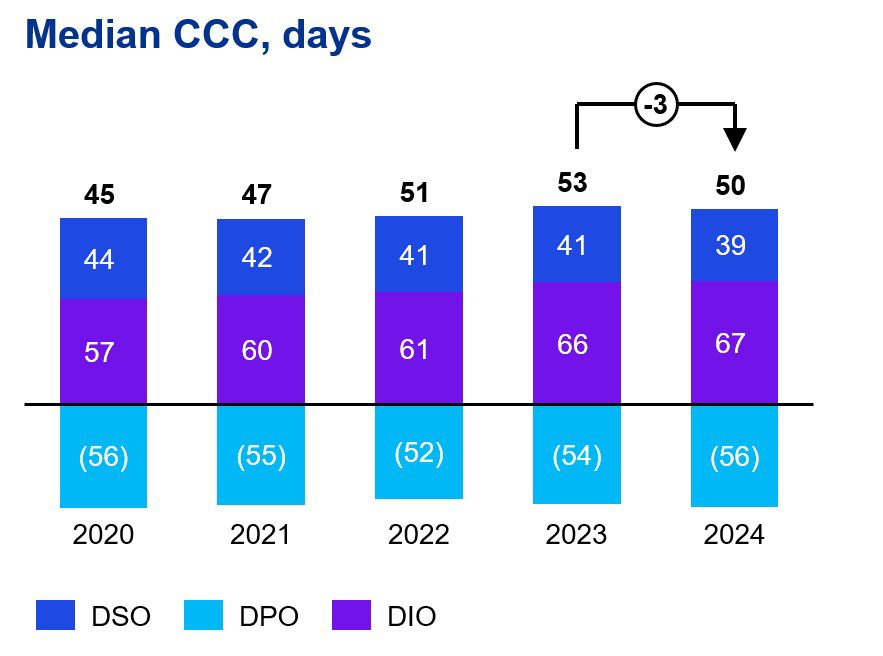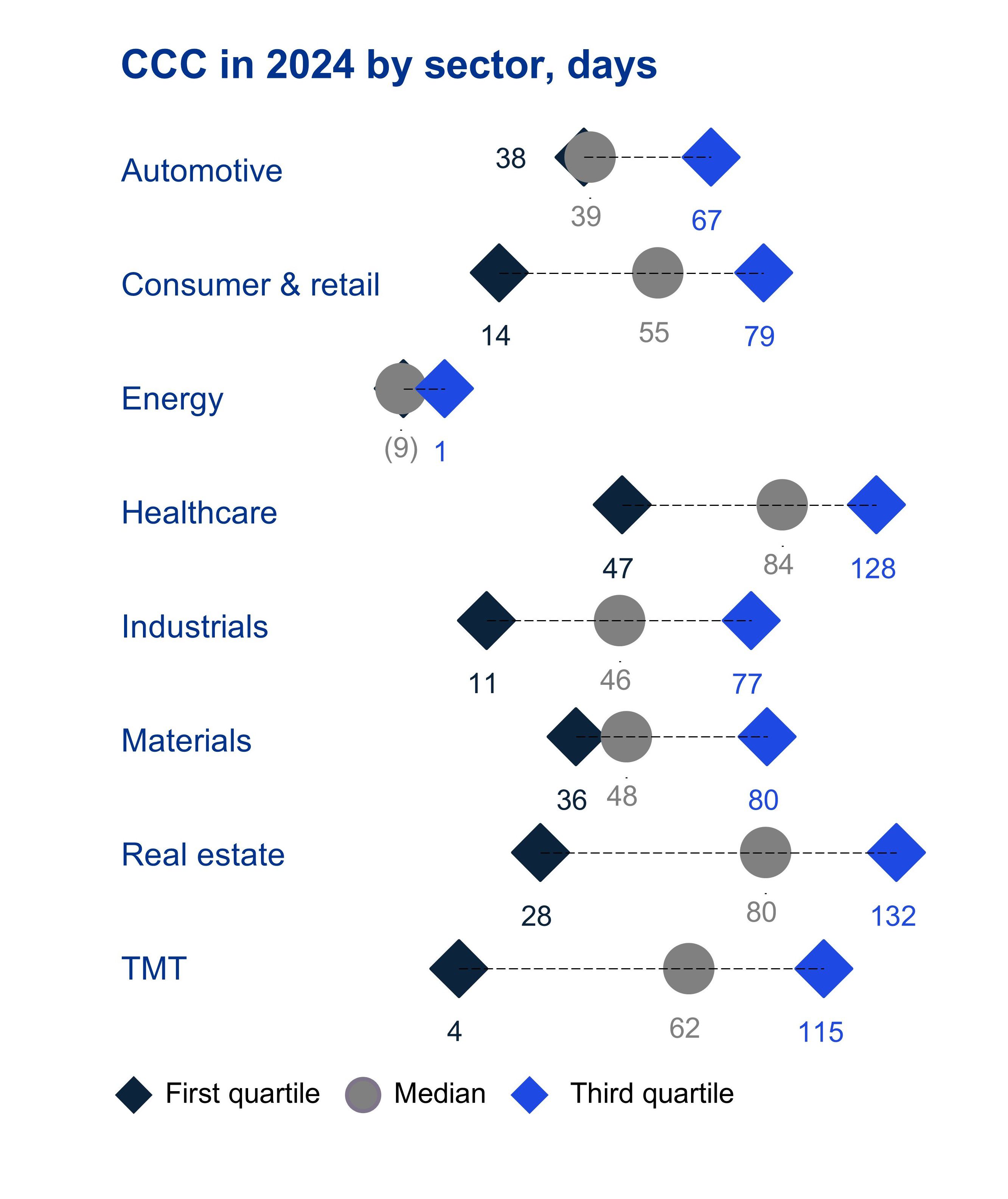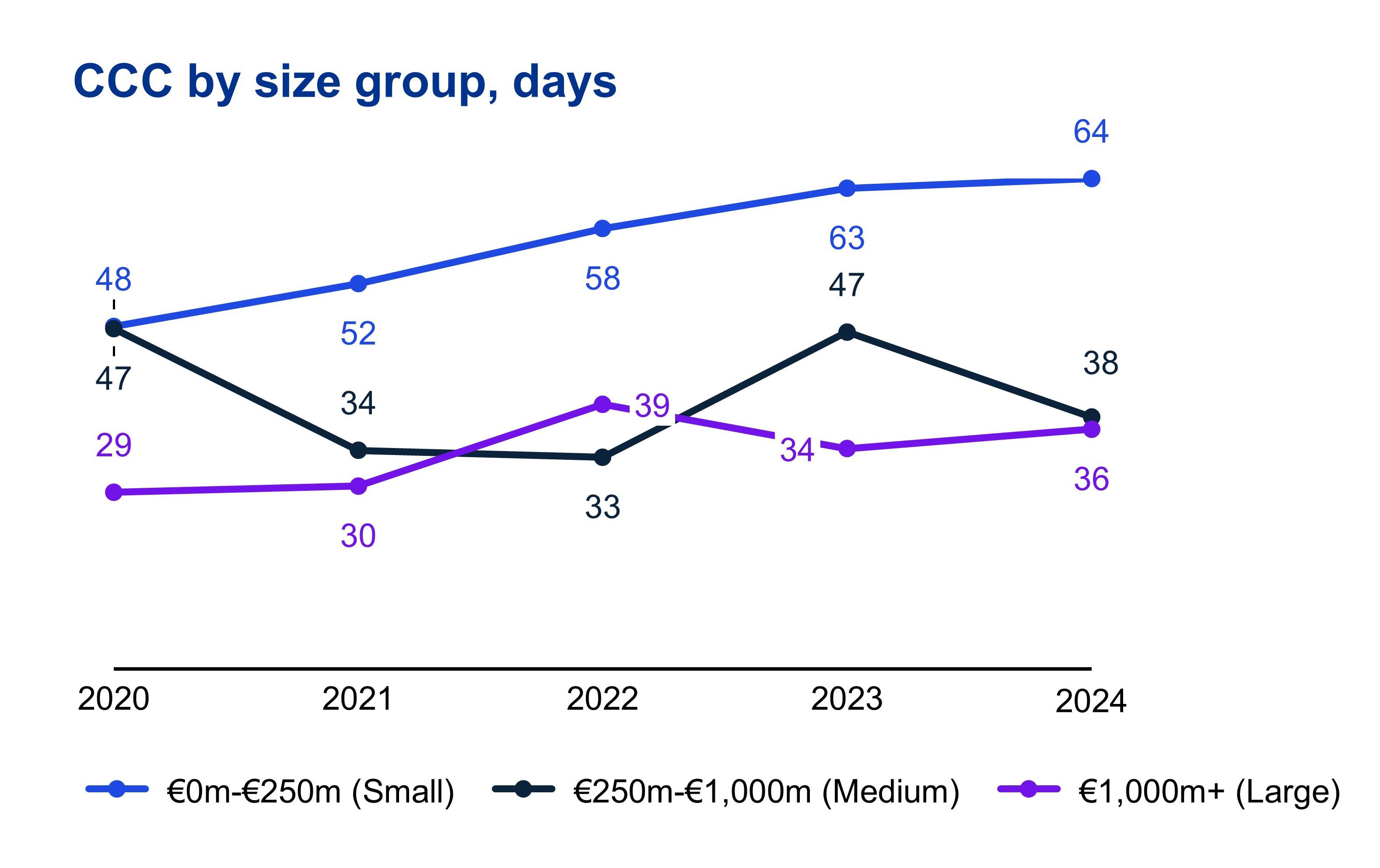Economic environment
Amid heightened geopolitical tensions and record-high economic uncertainty, working capital strategies face increasing pressure. While domestic demand supports modest Dutch GDP growth, trade disruptions, political tensions and negative consumer and producer sentiment demand sharper focus on liquidity, resilience, and operational efficiency.
We analyzed working capital trends across more than 550 public and private companies in the Netherlands. In addition, we examined how working capital performance varies by sector and company size. Our analysis shows that working capital levels, measured by the Cash Conversion Cycle (CCC), increased from 45 to 53 days between 2020 and 2023, with a slight decrease to 50 days in 2024.
Working capital performance
The overall Cash Conversion Cycle (CCC) has shown modest fluctuations over recent years. Following a sharp decline during the pandemic, 2022 marked a turning point, with CCC beginning to rise again. This reversal was primarily driven by increasing inventory levels, as companies faced slower turnover amid persistent inflation and cautious consumer behavior. Between 2020 and 2024, the median CCC rose slightly from 45 to 50 days, largely due to a rise in Days Inventory Outstanding (DIO), which was only partially offset by improvements in Days Sales Outstanding (DSO). Days Payable Outstanding (DPO) remained relatively stable between 2020 and 2024. In 2024, the CCC showed a slight improvement, decreasing by 3 days compared to 2023.

Insights by sector
In 2024, median cash conversion cycle (CCC) varied significantly across sectors. The Healthcare sector reported the highest median at 84 days, followed by Real Estate at 80 days and TMT at 62 days. Notably, several sectors exhibited wide disparities in performance shown by the first and third quartile CCC. TMT ranged from 4 to 115 days, Real Estate from 28 to 132 days, and Healthcare from 47 to 128 days. These broad spreads reflect business model differences within sectors but also suggest that while some companies within these sectors manage working capital efficiently, others may face substantial challenges—highlighting opportunities for targeted improvements.

Insights by size
For companies with revenues between €250 million and €1 billion, the cash conversion cycle (CCC) decreased when comparing 2024 to 2020, reaching 38 days in 2024. In contrast, the other size groups saw CCCs increase after the pandemic. A year-over-year comparison between 2023 and 2024 shows that CCC increased for the small and large size groups by 1 and 2 days, respectively. The CCC decreased for medium sized companies by 9 days.
Working capital remains critical and it is vital to ensure focus does not waver. At stake is the opportunity to free up funds, reduce the cost of capital and make investment go further in periods of uncertainty.

How we can help
We help organizations to rapidly identify and deliver quick wins and sustainable working capital improvement, for example through:
- rapid cash and working capital improvement diagnostics that quickly identify sources of upside and the steps needed to achieve this value;
- implementation support to help our clients define, develop and implement practical changes to their business; and
- a suite of digital tools that can help our clients proactively identify and address working capital issues.
Contact one of our specialists to discuss how we can help your organization elevate its working capital management.


